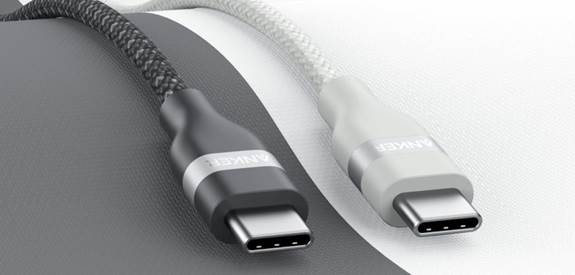Choosing the right usb c cable can significantly
enhance your device’s performance and longevity. With a plethora of options
available, it’s crucial to understand the various features and specifications
before making a purchase. This guide delves into what you need to know about
USB-C cables to ensure you get the best value and performance. We will cover
the types of USB-C cables, their uses, essential features to consider, and why
durability and certifications matter. Equip yourself with the knowledge to make
an informed decision the next time you shop for a USB-C cable.

Understanding USB-C Cable Types and
Their Uses
USB-C cables have revolutionized
connectivity with their universal plug-and-play nature. However, not all USB-C
cables are created equal. Some are intended purely for charging, while others
support data transfer and high-resolution video output.
Power-Only USB-C Cables: These are typically the most
affordable and are primarily used for charging devices. They lack the
capability to transfer data or support video output.
Data Transfer Cables: These cables not only charge your
device but also allow for data synchronization between devices. They are
essential for transferring files, backing up data, or connecting peripherals
like external drives.
Thunderbolt 3 Cables: Offering the highest performance,
these cables support data transfer speeds up to 40 Gbps and can connect to
high-resolution displays and powerful external GPUs. They are ideal for users
requiring high-speed data transfer and minimal latency.
Understanding the specific needs of
your devices and matching them with the appropriate USB-C cable type can
enhance functionality and efficiency. Always check the cable specifications to
ensure it meets your device’s requirements.
Key Features to Look for in a USB-C
Cable
Power
Delivery (PD) Support
Power Delivery (PD) is a key
feature in modern USB-C cables, enabling faster and more efficient charging
across a wide range of compatible devices. PD-supported cables intelligently
adjust voltage and current levels to deliver optimal power safely. This is
particularly valuable when charging high-consumption devices like laptops,
tablets, and fast-charging smartphones, ensuring speed without compromising
device safety or battery health.
Data
Transfer Speeds
When selecting a USB-C cable, data transfer speed is
paramount. Standard USB-C cables offer transfer speeds of up to 480 Mbps,
enough for everyday file transfers. However, for more demanding tasks, such as
video editing or large file backups, opt for cables supporting USB 3.1 or
higher, offering transfer speeds up to 10 Gbps or more.
Cable
Length and Flexibility
Cable length plays a crucial role
in both convenience and performance. While longer cables provide greater
flexibility for various setups, they can also introduce electrical resistance,
which may affect charging speed if the cable isn’t well engineered. It's
important to choose a length that fits your usage needs without compromising
efficiency. Also, consider thickness and flexibility—thicker cables often last
longer but may be harder to bend or manage in tight spaces. Look for a balance
between durability and ease of use to ensure optimal performance and comfort.
Importance of Cable Durability and
Build Quality
Materials
and Reinforcements
High-quality materials and
reinforcements play a crucial role in extending the life of USB-C cables.
Braided exteriors offer superior resistance to daily wear and tangling compared
to standard plastic designs. For maximum durability, choose cables reinforced
with aramid fiber, nylon braiding, or other rugged materials that withstand
bending, pulling, and frequent use.
Bend
Lifespan and Strain Relief
The bending lifespan indicates how
many times a cable can be bent before it breaks. Quality cables often advertise
over 5000 bend cycles. Strain relief is another feature that prevents the cable
from breaking at the connector joint, a common failing point. Ensuring your
cable has adequate strain relief can significantly extend its lifespan.

Certifications and Safety Standards
USB-IF
Certification
USB-IF certification guarantees that a USB-C cable
meets strict industry standards for quality, safety, and reliability. Certified
cables undergo extensive testing for performance, electrical safety, and
interoperability with various devices. This ensures consistent, secure
connections, protects your devices from damage, and provides peace of mind when
using high-power or data-intensive applications.
Compliance with Device Manufacturers
Using cables approved or
recommended by your device’s manufacturer can help prevent common issues like
slow charging, overheating, or data transfer interruptions. These manufacturers
often provide clear specifications and suggest compatible cable types.
Following these guidelines ensures optimal performance, long-term reliability,
and protects your device from potential damage or inefficiency.
Conclusion
Choosing
the right USB-C cable involves understanding your needs and the features
offered by different cables. Prioritize power delivery support, data transfer
speeds, and durability to get the most from your cable. Also, look for
certified cables to ensure safety and compatibility. With the right USB-C
cable, your devices can perform at their best, ensuring efficient charging,
fast data transfers, and prolonged usability. Be informed, choose wisely, and
enhance your tech experience.
